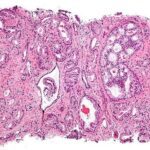“Physical activity and eating healthy are the cornerstones to good health”
healthy soch
New Delhi, June 03, 2019:
More than 80,000 cancer cases in some parts of the world are linked to a poor diet, according to a study published in the journal JNCI Cancer Spectrum. The findings are comparable to the number of cancer cases linked to alcohol consumption, which amount to between 4 and 6%. Excessive body weight is linked to 7% to 8% of cases and lack of physical activity is associated with 2% to 3%. The need of the hour is to raise awareness on the importance of a healthy diet in preventing cancer.
Of all types of cancers, colorectal cancer had the highest link to poor diet. Apart from putting government-sponsored warning labels on red meats and other cancer-linked foods, there is also a need for nutrition policies to address the cancer burden.
Speaking about this, Padma Shri Awardee, Dr KK Aggarwal, President, HCFI, said, “What we eat has a huge impact on our body. It can either aid our health and well-being or lead to diseases such as cancer. It is imperative that our diet is rich in fruits, vegetables, and whole grains to ward off potential health issues. The prevalence of cancer in our country is not uniform all over. There is a difference in the types of cancer that affect people in rural and urban settings. We have seen that in rural women, cervical cancer is the most widespread while in urban women, breast cancer is most rampant. In case of men, rural people are majorly affected by cancers of the oral cavity while rural men are greatly inflicted by cancer of the lung. Identifying the underlying cause and taking preventive action at the earliest is a must.”
Adding further, Dr Aggarwal, who is also the Group Editor-in-Chief, said, “Although the exact cause of cancer is not known, research indicates that certain risk factors may increase a person’s chances of developing cancer. These include things people cannot control, like age and family history. Lifestyle choices that increase your chances of contracting breast cancer are the usual suspects such as smoking, obesity, lack of exercise and poor diet.”
There are four major types of clinical preventive care: immunization, screening, behavioral counseling (lifestyle changes), and chemoprevention. Screening is the identification of an asymptomatic disease, unhealthy condition, or risk factor. Primary prevention are interventions to keep disease from occurring (eg, immunization for communicable disease); secondary prevention as detection of early asymptomatic disease (eg, screening); and tertiary prevention as reducing complications of disease (eg, eye examinations in patients with diabetes). This nomenclature is applied differently by some other disciplines.
Here are some ways by which one can diagnose and prevent the onset of this condition at an early stage.
- Pay attention to symptoms and get yourself checked regularly.
- Using any type of tobacco puts a person at an increased risk of cancer. Avoiding or stopping the consumption of tobacco is one of the foremost steps in cancer prevention.
- Filter tap water properly, as this can reduce your exposure to possible carcinogens and hormone-disrupting chemicals.
- Get vaccinated on time and as per schedule. For example, the Human Papilloma Virus (HPV) vaccine helps prevent most cervical cancers and several other kinds of cancer.
- Drinking plenty of water and other liquids can help in reducing the risk of bladder cancer by diluting the concentration of cancer-causing agents in urine and helping to flush them through the bladder faster.
- Most importantly, make lifestyle changes such as eating a healthy diet and getting regular exercise. Fruits and vegetables are rich in antioxidants which can help ward off diseases.
healthysoch







